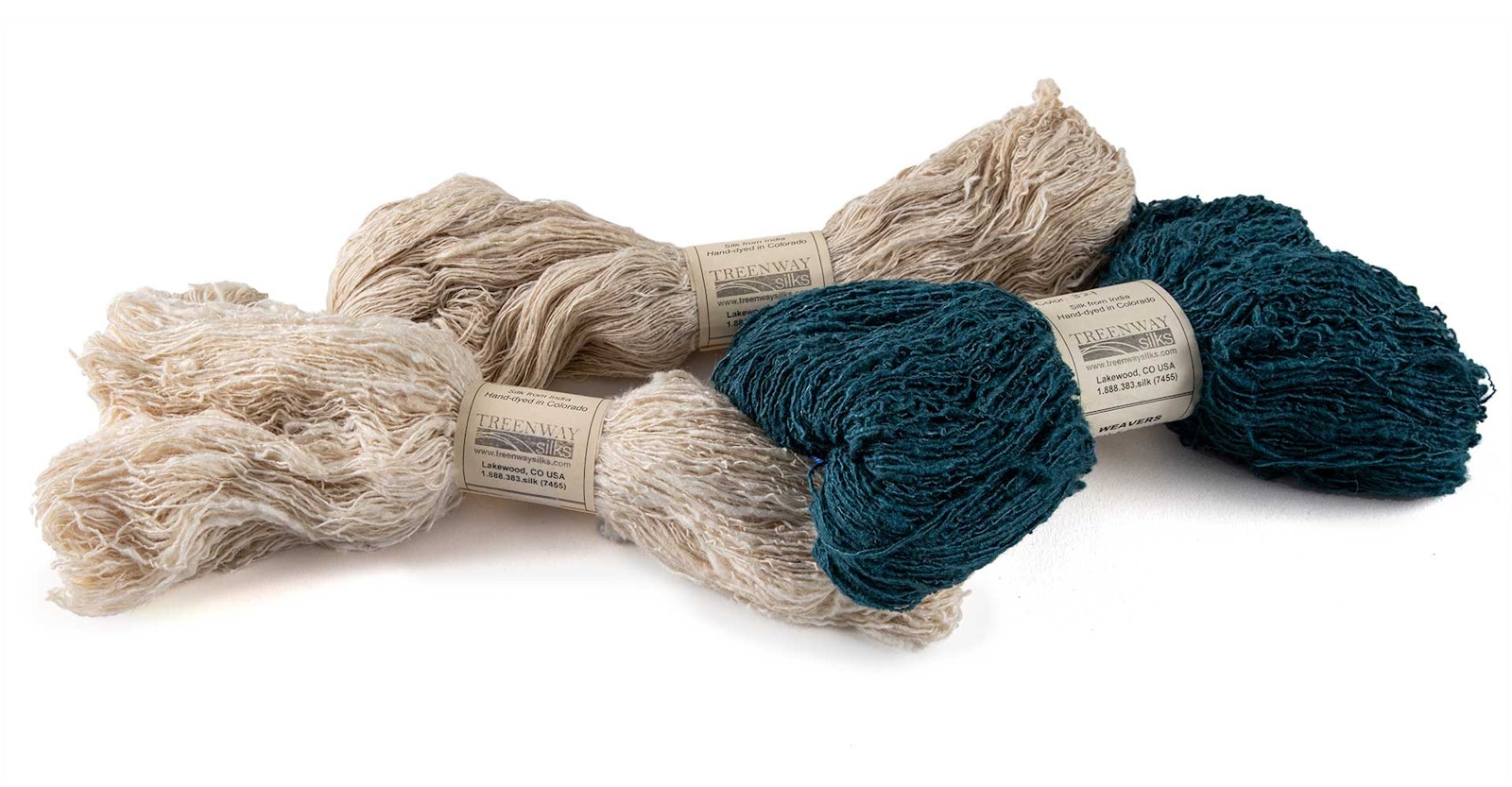Subscriber Exclusive
Yarn Lab: Shanta Eri Silk
Judy Stewart wove more Yarn Lab samples with Shanta Eri Silk for Handwoven September/October 2021 than we had room for. Here are six more samples that show other ways to use this unusual wild silk.
Judy Stewart wove more Yarn Lab samples with Shanta Eri Silk for Handwoven September/October 2021 than we had room for. Here are six more samples that show other ways to use this unusual wild silk. <a href="https://handwovenmagazine.com/yarn-lab-shanta-eri-silk/">Continue reading.</a>
https://handwovenmagazine.com/cdn-cgi/image/format=auto/https://www.datocms-assets.com/75077/1656656138-yarn-lab-210407_hwso21-303.jpg?auto=format&w=900
For our "Yarn Lab" in Handowoven September/October 2021, Judy Stewart submitted twelve samples using Shanta Eri silk from Treenway Silks, but we only had room in the issue to show six. Here are the remaining six samples with her notes about them. -Susan

SUBSCRIBER EXCLUSIVE
For our "Yarn Lab" in Handowoven September/October 2021, Judy Stewart submitted twelve samples using Shanta Eri silk from Treenway Silks, but we only had room in the issue to show six. Here are the remaining six samples with her notes about them. -Susan

[PAYWALL]
1a. Monk’s Belt Threading Woven as Waffle Weave
Warp: Gekko, #413 Peach Frappe.
Setts: 30 epi; 28 ppi.
Shrinkage in length: 6%.
Shrinkage in width: 10%.
Weft: Shanta, Natural: Once woven, the Peach Frappe warp softened to a very pale version of itself, giving a rustic, antique appearance to the fabric.
I wove three samples on a monk’s belt threading with waffle-weave treadling (see Resources, Bress). There is a classic, timeless element to these samples. They are featherlight with an easy drape, suitable for a light scarf or garment. In all of these samples the pattern is subtle.
1b.
Warp: Gekko, #413 Peach Frappe.
Setts: 30 epi; 28 ppi.
Shrinkage in length: 6%.
Shrinkage in width: 10%.
Weft: Shanta, #413 Peach Frappe: Having the same color in warp and weft highlighted the slight variation in dye in the Shanta silk, adding visual interest.
1c.
Warp: Gekko, #413 Peach Frappe.
Setts: 30 epi; 28 ppi.
Shrinkage in length: 6%.
Shrinkage in width: 10%.
Weft: Shanta, #9512 Arbutus: Using the slightly darker Arbutus brings out the pattern a bit more than the lighter-colored wefts did. The use of a slightly darker weft also brings out the texture and depth of this somewhat unusual weave.

2. Monk’s Belt
Warp: Gekko, #413 Peach Frappe.
These samples use the same threading but a different tie-up and treadling than samples 1a–1c. Monk’s belt requires a tabby weft, for which I used the Shanta. The pattern is quite a bit more dramatic than in the previous samples, although the Shanta still gives the cloth a soft and subtle effect.
2a. Pattern weft: Shanta, Natural.
Tabby: Myōjō , Natural, and Gekko, #413 Peach Frappe.
Setts: 30 epi; 26 ppi.
Shrinkage in length: 9%.
Shrinkage in width: 5%.
In this sample, I started weaving with 60/2 silk, Natural, but then I switched things up and used Gekko Peach Frappe for the tabby. Doing so gave more prominence to the Shanta pattern weft and allowed the solid-colored plain-weave blocks to clearly show the pattern.
2b. Pattern weft: Shanta, #413 Peach Frappe.
Tabby: Gekko, #413 Peach Frappe.
Setts: 30 epi; 27 ppi.
Shrinkage in length: 7%.
Shrinkage in width: 5%.
The pattern is visible but not bold due to lack of strong contrast. The use of the same color in warp and weft allows the slight color variation in the Shanta to become more prominent, providing interest in this sample.
2c. Pattern weft: Shanta, #9512 Arbutus.
Tabby: Gekko, #413 Peach Frappe.
Setts: 30 epi; 27 ppi.
Shrinkage in length: 9%.
Shrinkage in width: 5%.
The fabric is lightweight with wonderful drape. The pattern stands out more than in the other samples and would do so even with a denser sett.
Resources
- Bress, Helene. The Weaving Book: Patterns and Ideas. New York: Scribner, 1981, 371.



